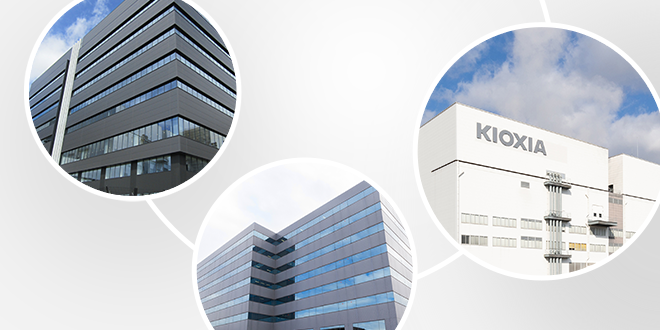Please select your location and preferred language where available.
Low Power and Thermal Throttling-less SSD with In-Package Boost Converter for 1,000-WL Layer 3D Flash Memory
September 06, 2023
The high density of 3D flash memory has reduced the silicon area per capacity and cost per bit, enabling SSDs to be used in various applications such as the data centers, mobile PCs, and smartphones. One of the greatest advantages of 3D flash memory is that it consumes less power than HDD. Therefore, it is mostly used to reduce the power consumption in mobile PCs and smartphones because the power supply is limited by batteries.
Recently, mobile products have become drastically smaller, and the density of mounted components has increased significantly. Heat-generating components are typically cooled by heat sinks or fans; however, in smaller, higher-density mobile products, there is no space to incorporate these components. The 3D flash memory generates heat during operation, and its stable operation is interrupted when the device temperature becomes 85°C or higher. Consequently, the operating speed is reduced to suppress overheating, leading to a significantly lower performance [1], which is generally known as “thermal throttling.” To prevent thermal throttling without using heat sinks or fans, the storage device of the 3D flash memory with low power consumption and low heat generation is strongly required.
A power supply of 3.3 V or 2.5 V is converted to higher voltages such as 10 V, 20 V or more by using the on-die charge pump circuit. Its current conversion efficiency is relatively low at only a few percent (3%–5%) and generates heat. We fabricated a novel packaged device consisting of 3D flash memory chips and a boost converter inside the package (Figure 1). Replacing the charge pump circuit with a boost circuit that has good conversion efficiency can suppress heat generation. As a result, under actual operating conditions, it is possible to suppress temperature rise by approximately 50% (Figure 2).


When the number of word-line layers of 3D flash memory reaches 1,000 layers, power consumption can be reduced by 43%. Furthermore, power consumption can be reduced by 9% compared to conventional 1xx layers 3D Flash memory (Figure 3). Our in-package boost converter is an effective technology to suppress power consumption and temperature rise in future 3D flash memory to realize the thermal throttling-less SSD.

Reference
[1] Hedan Zhang et al., "SSD Thermal Throttling Prediction Using Improved Fast Prediction Model", 18th IEEE ITHERM Conference, 2019, pp. 1016-1019.
[2] Kazuma Hasegawa et al., “Low Power and Thermal Throttling-less SSD with In-Package Boost Converter for 1000-WL Layer 3D Flash Memory”, 2023 IEEE International Memory Workshop (IMW), 2023

